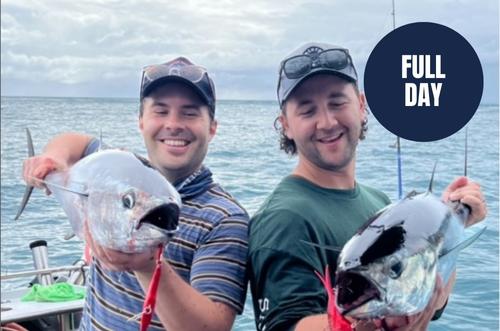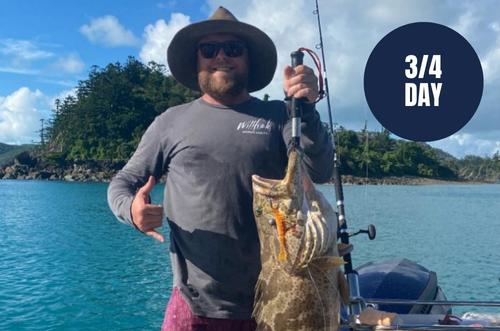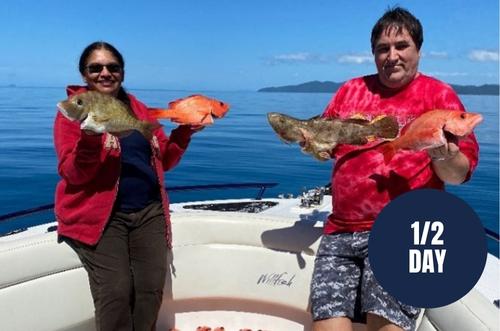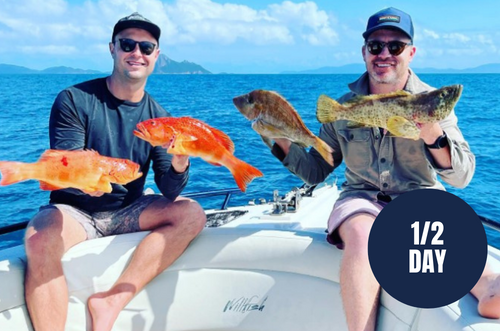Spanish Mackerel Fishing Airlie Beach: Tips
Spanish Mackerel is probably one of the most famous sport fish. Keep on reading this Spanish mackerel fishing Airlie Beach post for some tips and tricks you can use on your next boating trip.
Catching Spanish Mackerel is almost always action-packed. With a streamlined body that’s built for speed and razor-sharp teeth, this fish killing machine is the ultimate predator.
Aside from being the perfect sport fish, it’s also the most sought-after table fish. Most anglers don’t get tired of catching it, too, since it can be caught in practically a lot of ways.
Ready to meet some Spanish Mackerel once and for all? Then read this Spanish Mackerel fishing Airlie Beach post to finally catch one for yourself!
Spanish Mackerel Fishing Airlie Beach: Where and How to Catch One
The Spanish Mackerel is known by various names outside of Australia. These include the Blue Mackerel, Narrow-barred Mackerel, or The King Mackerel.
It prefers warm waters so it’s common in Queensland, northern New South Wales, the Northern Territory and mid- to Northern Western Australia.
With that, the Mackerel will also travel south when the warmer currents go south.
Mackerels swim in large schools and attack bait fish and small tuna—making double and triple hook-ups common. Their average size is around 12-15 kg but can weigh as much as 60 kg!
When you’re planning to catch a Mackie, better prepare the landing of the fish first. It tends to go crazy once caught, so have a spot exclusive for this angry fish or use a donger or lip grippers to knock it out (it’s a bit safer when it’s unconscious.)
Following surface bait school activity or using a sounder is helpful, too.
Spanish Mackerel like depth of about 30 meters. If there are no bait schools around, create drop-offs in 20-30 or 30-40 meter structures as it tends to target these areas.
Moreover, it’s more likely that Mackerels hang-out in these drop-offs making them easier to catch—instead of trying to catch them when they’re feeding on bait.
Book your Spanish Mackerel Fishing trip and book a Willfish Whitsundays Fishing Charters trip now!
Spanish Mackerel Fishing Airlie Beach: Balloon Fishing
Land-based game or LBG is a fun way to catch Mackie from the shore. A large party balloon and stiff offshore breeze are all you’ll need, with cliffs often being the hotspots.
You might just need a helium/nitrogen mix so your balloon remains in the air to get the bait as far as possible from the shore.
The key here is to have the bait skip on the surface to attract the attention of predators like the Mackerel. Once the fish hits a skipping bait, it normally gets airborne.
Balloon fishing is quite expensive, though, considering you’ll need cylinders, gas, etc.
However, it may not be that expensive compared to the price of maintaining a boat. If you think this is your thing, plan accordingly as you’ll need a lot of gear depending on where you fish.
Flying fish is on a Mackerel’s tucker list so it’s known to take baits up to 2 meters above the water’s surface. Pilchards or garfish on 3-5 gang hooks are the best baits to use.
Spanish Mackerel Fishing Airlie Beach: Live-Baiting
There are different ways to entice a Mackie. And, taking a fish in distress is the hardest one for it to resist.
Live-baits can work in a lot of ways. The most common one is when they’re tied to a balloon as Mackerel is known to feed off the surface.
After attaching your bait under the balloon and after the balloon drifts off, what happens next is usually something big.
A shark, barracuda, or mackerel may follow the bait. Moreover, you’re more likely to get bigger Mackerel through this compared to trolling (which we’ll explain next.)
You may also live-bait a Mackerel by slow trolling a yakka or slimy mackerel.
Just use the same rig and wire to an 8/0 circle hook. Hook the circle hook through the nose of the bait and troll at about two knots, making sure to let out around 80 meters of the line so the fish swims as naturally as possible.
These techniques can also be used or marlin, tuna, cobia, or sailfish.
Spanish Mackerel Fishing Airlie Beach: Trolling
This is the most popular and easiest way to catch Mackerels. The technique of trolling a garfish with pink octopus lure has been used for many years yet is still successful today.
Professional Mackerel fishermen swear by this method, too! Sure, they may use handlines that shorten the fight, but the results stay the same for amateurs and their rod and reel.
Many anglers are now using deep divers (bibbed minnows) which are more expensive but lessen the hassle and smell of bait.
Rigging a garfish onto 5 knots straight isn’t as easy as it looks! Even the mouth should be wired shut to do the job, and lures have made life easier by diving 1 to 8 meters below the surface.
Start by trolling with two or three rods. Try them all with different-colored lures and depths and take note of which one gets the most action to have your own favorite.
Just make sure to have lures with heavy-duty treble hooks. If you have cheaper lures, consider upgrading their hooks.
In terms of trolling speed, 4-6 knots may be enough. But, if you’re looking for fish on a sounder but still aren’t getting hits, increasing it to 8 knots can be very effective.
Want to give it a try?
Willfish is a long established fishing charter in Queensland and has been departing for fishing tours in the Whitsundays for many years. Trust us to give you the best fishing holiday experience!
We depart daily from Airlie beach ports: Book your Whitsundays Fishing charter and catch that Mackerel!






